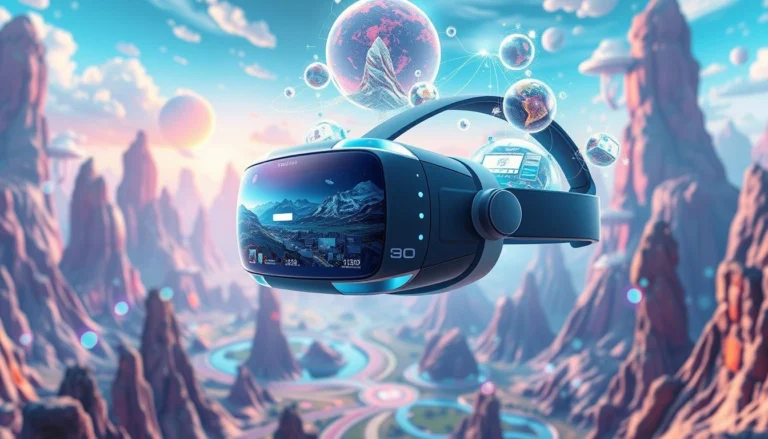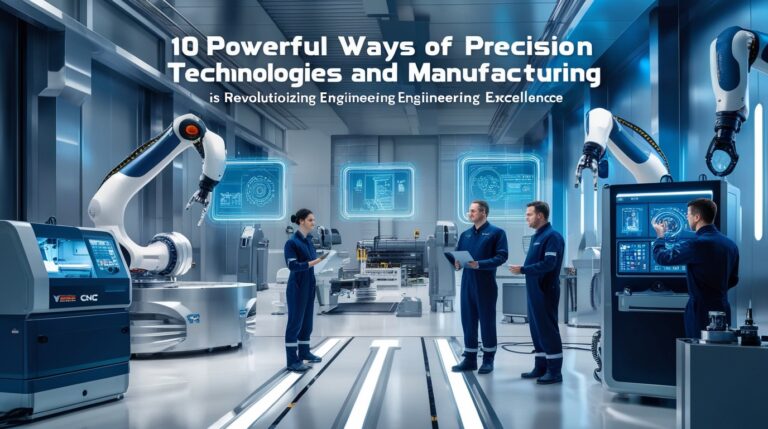2025 Tech Trends Reshaping Business Growth
Navigating the Digital Frontier: Top 2025 Tech Trends Reshaping Businesses
Estimated Reading Time: 6-7 minutes
Key Takeaways
- Prioritize web performance with modern frameworks like Next.js and React for faster loading and improved SEO.
- Leverage headless CMS and micro frontends for flexible, scalable web architecture that enhances content delivery.
- Embrace AI automation in web applications and business workflows to personalize user experiences, streamline tasks, and boost efficiency.
- Opt for cross-platform mobile development (Flutter/React Native) for efficient market entry, and focus on responsive, accessible UI/UX design.
- Adopt strategic cloud migration, serverless architectures, and robust DevOps practices (like CI/CD) for agility, scalability, and cost efficiency.
- Approach AI implementation strategically, understanding its limitations, ensuring data quality, and maintaining human oversight to avoid “AI fails.”
Table of Contents
- The Evolving Web: Modern Web Development Trends for 2025
- Mobile App Innovation: Navigating Mobile App Development 2025
- Cloud and DevOps: Powering Efficiency and Scale for 2025
- The AI Revolution: Driving AI Automation for Businesses in 2025
- Modern UI/UX Design: Crafting Seamless Digital Experiences
- Embracing the Future with Confidence
- FAQ
The digital landscape is a relentless torrent of innovation, constantly shifting and evolving. For business professionals, entrepreneurs, and tech-forward leaders, staying ahead isn’t just an advantage—it’s a necessity. As we look towards 2025, a confluence of groundbreaking tech trends is poised to redefine how we operate, connect, and thrive. From revolutionary advancements in web and mobile development to the pervasive intelligence of AI automation and the strategic evolution of cloud infrastructure, understanding these shifts is paramount. In this comprehensive guide, we’ll dissect the forces shaping the digital world, offering insights into practical applications and strategies your business can adopt today to prepare for tomorrow.
At AI TechScope, we specialize in transforming these complex trends into tangible growth opportunities. Our expertise in AI-powered automation, n8n workflow development, and intelligent delegation helps businesses harness cutting-edge technologies to scale operations, reduce costs, and achieve unprecedented efficiency. Let’s embark on this journey through the 2025 tech trends that are not just on the horizon, but actively transforming the present.
The Evolving Web: Modern Web Development Trends for 2025
The web remains the primary interface for most businesses, and its evolution is accelerating. Web development trends in 2025 are all about speed, efficiency, and delivering personalized, intelligent experiences.
The Performance Imperative: Next.js and React
In an age of instant gratification, website performance is non-negotiable. Slow loading times directly translate to lost engagement, higher bounce rates, and diminished SEO rankings. This is why frameworks like Next.js, built on React, are becoming indispensable. Next.js, in particular, offers server-side rendering (SSR), static site generation (SSG), and incremental static regeneration (ISR), which significantly improve initial page load and overall user experience.
For small businesses, Next.js isn’t just for tech giants. You can build a fast marketing site in one weekend using Next.js, leveraging its performance benefits without extensive development overhead. For more established applications, simple React performance fixes—like optimizing component rendering, using React.memo, and implementing lazy loading—can reduce page load by seconds, drastically improving user satisfaction and search engine visibility. Our real-world case studies often show page load reductions of 60% or more, directly impacting conversion rates.
Practical Takeaway: Prioritize web performance. Evaluate your current website’s speed and consider migrating to or building new sites with modern frameworks like Next.js. Implement performance optimization techniques for existing React applications.
How AI TechScope Helps: Our team excels in developing high-performance, SEO-friendly websites using Next.js and React. We specialize in optimizing existing web applications and building new ones that deliver exceptional speed and user experience, critical for digital transformation.
Decoupling Power: Headless CMS and Micro Frontends
Modern web architecture is moving towards greater flexibility and scalability.
- Headless CMS (e.g., WordPress): Gone are the days of monolithic WordPress sites bloated with unnecessary plugins. A headless CMS separates the content management backend from the frontend presentation layer. This allows businesses to use WordPress purely for content creation and management, while a modern frontend (like Next.js) consumes content via APIs. This approach offers unparalleled flexibility, security, and performance. Using WordPress without the bloat means selecting lightweight plugins that truly help SEO and leveraging its powerful content management capabilities in a decoupled environment.
- Micro Frontends: Inspired by microservices, micro frontends break down large, complex web applications into smaller, independently deployable units. This allows different teams to work on separate parts of the UI, using different technologies if necessary, without stepping on each other’s toes. While powerful for large organizations, it’s crucial to understand when micro frontends help and when they hurt. For smaller, cohesive applications, the overhead might outweigh the benefits. However, for enterprise-level platforms requiring modularity and independent scaling of different features, they offer significant advantages.
Practical Takeaway: Assess if your content management system is hindering your frontend performance or flexibility. Consider a headless CMS approach for greater control and scalability. For large-scale applications, explore micro frontends to enhance team autonomy and accelerate development cycles, but be mindful of their complexity.
The Intelligent Web: AI-Powered Web Apps
Integrating Artificial Intelligence directly into web applications is no longer futuristic; it’s a competitive differentiator. AI-powered web apps can offer personalized experiences, predictive analytics, and automated assistance that delight users. Think recommendation engines, intelligent search filters, or dynamic content generation. Even low-effort AI features can significantly enhance user experience and make your SaaS smarter. For instance, an AI-powered content suggestion tool within a blogging platform or an intelligent chatbot answering FAQs directly on a product page adds immense value without requiring a complete overhaul.
Practical Takeaway: Identify opportunities to infuse AI into your web applications. Start with “low-effort” features that leverage AI to personalize user experiences, streamline navigation, or provide intelligent assistance.
How AI TechScope Helps: We integrate AI capabilities into your web applications, from intelligent search to personalized recommendations, building smarter tools that enhance user engagement and drive business value.
Mobile App Innovation: Navigating Mobile App Development 2025
Mobile applications remain a cornerstone of digital strategy, and mobile app development 2025 is characterized by cross-platform efficiency and superior user experience.
Cross-Platform Dominance: Flutter vs. React Native in 2025
The debate between Flutter and React Native continues, but both have solidified their positions as leading choices for building cross-platform apps. For businesses, especially startups, the ability to write code once and deploy to both iOS and Android significantly reduces development time and cost.
- React Native vs. Flutter in 2025: React Native, leveraging JavaScript, has a large community and offers a familiar environment for web developers. Flutter, backed by Google and using Dart, boasts impressive performance and highly customizable UI capabilities, making it easier to build a simple cross-platform app with Flutter from idea to Play Store quickly. The choice of which mobile framework is best for your business app often comes down to existing team expertise, specific performance requirements, and desired UI fidelity. Both offer excellent solutions for quick market entry and efficient resource utilization.
Practical Takeaway: For new mobile app projects, strongly consider cross-platform frameworks like Flutter or React Native to optimize development resources and accelerate time-to-market. Evaluate your team’s skillset and app requirements to make an informed decision.
How AI TechScope Helps: Our experts provide strategic guidance on choosing the optimal mobile development framework for your business needs, ensuring efficient development and a robust, scalable application.
Designing for Everyone: Mobile App UI Trends and Accessibility
Modern mobile UI isn’t just about aesthetics; it’s about functionality, responsiveness, and inclusivity. Mobile app UI trends emphasize intuitive navigation, fluid animations, and a seamless experience across various device sizes. Crucially, responsive UI design is a fundamental principle, ensuring your app looks and performs perfectly whether on a smartphone or a tablet.
Accessibility is also moving from a niche concern to a core design principle. Designing accessible buttons (and other UI elements) is not just about compliance; it broadens your user base and improves the experience for everyone. This includes considerations like sufficient contrast, large tap targets, clear focus states, and semantic labeling for screen readers.
Practical Takeaway: Invest in user-centric and accessible UI/UX design for your mobile applications. Ensure responsive design principles are applied rigorously, and integrate accessibility considerations from the outset.
Cloud and DevOps: Powering Efficiency and Scale for 2025
The foundation of modern digital infrastructure rests on the cloud, and efficient software delivery hinges on DevOps. These areas will continue to be critical enablers for businesses seeking agility and scalability in 2025.
Strategic Cloud Adoption: Migration and Serverless Architectures
Cloud computing offers unparalleled flexibility, scalability, and cost-efficiency. For many businesses, the challenge is not whether to adopt the cloud, but how.
- Cloud Migration Strategy: Moving legacy applications to the cloud can be daunting. The key is to approach it strategically, understanding how to move your legacy app to the cloud without breaking it. This often involves a phased approach, modernizing components, and leveraging cloud-native services where appropriate. For small companies, digital transformation on a budget often starts with a clear cloud migration roadmap, prioritizing workloads that offer the quickest ROI or address critical pain points.
- Serverless Architecture: This paradigm is revolutionizing backend development by allowing developers to write and deploy code without managing servers. It’s incredibly cost-efficient because you only pay for the compute time your code actually runs. Serverless on AWS (using services like Lambda, API Gateway, and DynamoDB) allows you to create a cost-efficient backend that scales automatically to meet demand, making it an ideal choice for startups and businesses with unpredictable traffic patterns.
Practical Takeaway: Develop a clear cloud migration strategy if you haven’t already. Explore serverless architectures for new projects or to modernize existing components, particularly for unpredictable workloads or event-driven applications, to achieve significant cost savings and scalability.
How AI TechScope Helps: We provide expert cloud consulting, helping businesses design and execute seamless cloud migration strategies and build scalable, cost-efficient serverless backends that empower rapid innovation.
Streamlined Development: DevOps Best Practices and CI/CD Automation
Agile development methodologies coupled with robust DevOps practices are essential for rapid, reliable software delivery.
- CI/CD for Small Teams: Continuous Integration and Continuous Deployment (CI/CD) pipelines automate the build, test, and deployment phases of software development. For small teams, this means automated deployments without the headache. Tools like GitHub Actions provide a powerful, yet accessible way to set up CI/CD, enabling quick iterations, reducing manual errors, and freeing up developers to focus on innovation rather than operational tasks. A well-implemented CI/CD pipeline ensures that every code change is thoroughly tested and can be deployed to production with confidence and speed.
Practical Takeaway: Implement CI/CD automation even for small teams. Leverage tools like GitHub Actions to streamline your deployment processes, reduce manual errors, and accelerate your development cycles.
How AI TechScope Helps: Our team helps businesses establish robust DevOps practices and CI/CD pipelines, optimizing software development and deployment for speed, reliability, and quality.
The AI Revolution: Driving AI Automation for Businesses in 2025
No discussion of 2025 tech trends would be complete without delving into the transformative power of Artificial Intelligence. AI automation for businesses is no longer a luxury; it’s a core strategy for efficiency, intelligence, and competitive advantage.
Intelligent Delegation: Workflow Automation Tools + AI
AI is supercharging workflow automation, allowing businesses to offload repetitive tasks to intelligent systems. Tools like n8n, when combined with AI capabilities, can automate repetitive tasks with no-code tools + AI, potentially saving 5–10 hours/week per employee. This isn’t just about simple task scheduling; it involves AI-driven decision-making, natural language processing for data extraction, and intelligent routing. Imagine AI classifying incoming emails, extracting key information from documents, or automating lead qualification based on sentiment analysis—all freeing up human talent for more strategic work.
- Chatbot Automation: AI-powered chatbots are evolving rapidly, moving beyond simple FAQs to become integral parts of customer service, sales, and internal support. For small businesses, chatbots can save time by handling routine inquiries, providing instant support, and even guiding customers through sales funnels. Real-world workflows show chatbots successfully qualifying leads, booking appointments, and resolving common customer issues, providing 24/7 service without human intervention.
Digital Transformation: AI at the Core
AI is the engine driving enterprise digital adoption and broader digital transformation strategies. It enables businesses to glean deeper insights from data, personalize customer experiences at scale, and optimize operational processes in ways previously unimaginable. From predictive maintenance in manufacturing to AI-driven marketing campaigns, AI is shifting businesses from reactive to proactive, data-driven decision-making.
The Nuance of AI: Addressing AI Fails and Ensuring Success
While the promise of AI is immense, it’s crucial to acknowledge its limitations and potential pitfalls. As the article “AI Tools: AI Fails… You can’t always get what you want!” by Jeff Foster wisely points out, AI is not a magic bullet. AI fails can occur due to biased data, inadequate training, poor implementation, or simply expecting AI to perform tasks beyond its current capabilities. Relying solely on AI without human oversight can lead to errors, ethical dilemmas, and even reputational damage.
The key to successful AI implementation lies in a thoughtful, strategic approach:
- Clear Problem Definition: Understand exactly what problem AI is intended to solve.
- Quality Data: AI is only as good as the data it’s trained on.
- Human-in-the-Loop: Design systems where human oversight and intervention are possible, especially for critical decisions.
- Ethical Considerations: Address biases, privacy, and accountability from the outset.
- Realistic Expectations: Understand what AI can and cannot do effectively today.
Practical Takeaway: Identify repetitive, rule-based tasks suitable for AI-powered automation. Implement chatbots to enhance customer service and streamline internal processes. However, approach AI deployment with a critical eye, understanding its limitations and ensuring human oversight and ethical considerations are paramount to avoid “AI fails.”
How AI TechScope Helps: This is our core expertise. As a leading provider of virtual assistant services, AI TechScope specializes in AI-powered automation and n8n workflow development. We help businesses leverage cutting-edge AI tools to build intelligent delegation systems, optimize business processes, and achieve significant cost reductions and efficiency gains. We guide you through selecting the right AI solutions, implementing them effectively, and integrating human oversight to ensure success and avoid common AI pitfalls.
Modern UI/UX Design: Crafting Seamless Digital Experiences
User Interface (UI) and User Experience (UX) design are no longer afterthoughts but strategic imperatives. Modern UI/UX design in 2025 focuses on creating intuitive, delightful, and accessible interactions.
- User-Centricity: At its heart, modern design is deeply user-centric. This means understanding user needs, behaviors, and pain points to design solutions that genuinely make their lives easier.
- Responsive UI Design: As mentioned in mobile and web sections, this is fundamental. Ensuring your digital products adapt flawlessly to any screen size or device is critical for reach and user satisfaction.
- Accessibility: Beyond compliance, designing for accessibility ensures that everyone, including individuals with disabilities, can use your products effectively. This includes considerations like color contrast, keyboard navigation, clear labeling, and screen reader compatibility. Ignoring accessibility alienates a significant portion of your potential audience and can lead to legal repercussions.
Practical Takeaway: Invest in professional UI/UX design. Prioritize user research, implement responsive design principles across all platforms, and ensure your digital products are accessible to all users.
How AI TechScope Helps: Our design philosophy is deeply rooted in modern UI/UX principles. We create intuitive, engaging, and accessible digital experiences that resonate with your audience and enhance user satisfaction, whether for websites, mobile apps, or custom platforms.
Embracing the Future with Confidence
The 2025 tech trends we’ve explored—from advanced web and mobile development to strategic cloud adoption, pervasive AI automation, and refined UI/UX design—are not isolated phenomena. They are interconnected forces driving a holistic digital transformation. For businesses, embracing these trends means more than just adopting new tools; it means rethinking processes, optimizing workflows, and creating more intelligent, efficient, and user-centric operations.
The opportunities for growth, cost reduction, and competitive differentiation are immense. By strategically integrating these technologies, businesses can unlock new levels of productivity, deliver exceptional customer experiences, and adapt with agility to market changes.
At AI TechScope, we are your trusted partner in navigating this exciting future. Our expertise in AI automation, n8n workflow development, AI consulting, and cutting-edge web development is designed to empower your business. We provide the strategies, tools, and virtual assistant services necessary to leverage these 2025 tech trends effectively, helping you streamline operations, enhance decision-making, and achieve sustainable growth.
Ready to Transform Your Business with Intelligent Automation and Expert Guidance?
Don’t let the complexity of emerging technologies hold your business back. Partner with AI TechScope to turn these 2025 tech trends into your competitive advantage. Whether you need to optimize your workflows with AI-powered automation, develop a high-performance website, or strategize your digital transformation journey, our team is here to help.
Explore AI TechScope’s AI Automation and Consulting Services Today!
Let us help you build a smarter, more efficient, and future-ready business.
FAQ
- What are the top web development trends for 2025?
Key trends include prioritizing performance with frameworks like Next.js and React, adopting headless CMS and micro frontends for flexibility, and integrating AI into web apps for personalized experiences.
- Why is Next.js important for web performance?
Next.js significantly improves initial page load and overall user experience through server-side rendering (SSR), static site generation (SSG), and incremental static regeneration (ISR), all contributing to faster, more efficient websites.
- What is a headless CMS and how does it help businesses?
A headless CMS separates content management from the frontend presentation. This offers unparalleled flexibility, security, and performance, allowing businesses to use powerful content management systems like WordPress purely for content while a modern frontend consumes it via APIs.
- Which cross-platform mobile framework is better, Flutter or React Native?
Both Flutter and React Native are excellent choices for cross-platform app development, reducing time and cost. The best choice depends on existing team expertise (JavaScript for React Native, Dart for Flutter), specific performance needs, and desired UI fidelity.
- How can AI help my business save time?
AI-powered automation tools like n8n can automate repetitive tasks, saving employees 5-10 hours per week. Chatbots can handle routine customer inquiries, qualify leads, and provide 24/7 support, freeing up human staff for more strategic work.
- What are the risks of AI automation?
Risks include “AI fails” due to biased data, inadequate training, or poor implementation. Over-reliance on AI without human oversight can lead to errors, ethical dilemmas, and reputational damage. Strategic implementation with clear problem definition, quality data, and human-in-the-loop systems is crucial.
- What is serverless architecture and its benefits?
Serverless architecture allows developers to deploy code without managing servers, paying only for actual compute time. This offers significant cost savings and automatic scalability, making it ideal for startups and applications with unpredictable traffic.
- Why is UI/UX design crucial in 2025?
Modern UI/UX design focuses on user-centricity, responsiveness across devices, and accessibility. Investing in intuitive, delightful, and accessible design is critical for user satisfaction, broader reach, and avoiding legal issues, making it a strategic imperative for digital products.







